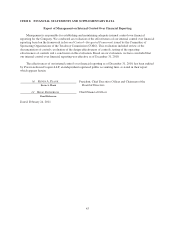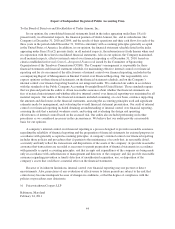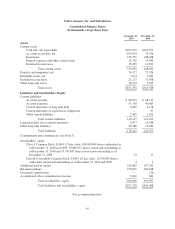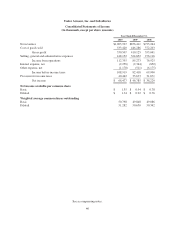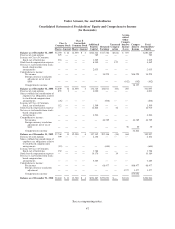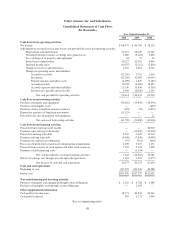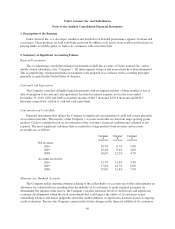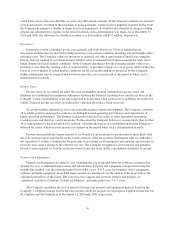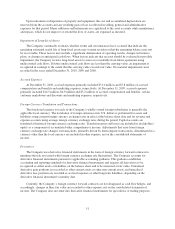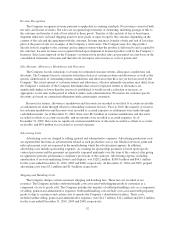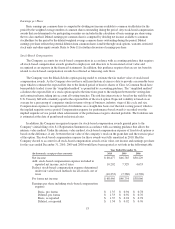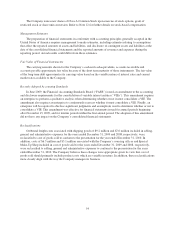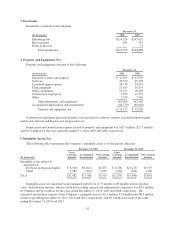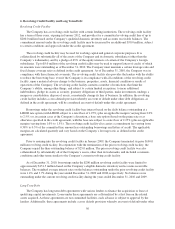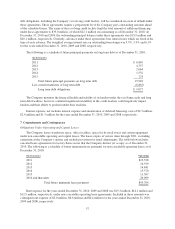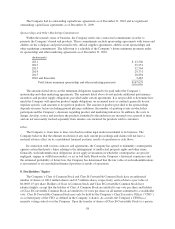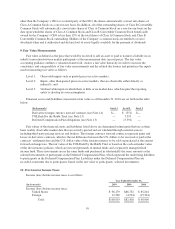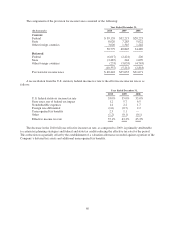Under Armour 2010 Annual Report Download - page 61
Download and view the complete annual report
Please find page 61 of the 2010 Under Armour annual report below. You can navigate through the pages in the report by either clicking on the pages listed below, or by using the keyword search tool below to find specific information within the annual report.
Earnings per Share
Basic earnings per common share is computed by dividing net income available to common stockholders for the
period by the weighted average number of common shares outstanding during the period. Any stock-based compensation
awards that are determined to be participating securities are included in the calculation of basic earnings per share using
the two class method. Diluted earnings per common share is computed by dividing net income available to common
stockholders for the period by the diluted weighted average common shares outstanding during the period. Diluted
earnings per share reflects the potential dilution from common shares issuable through stock options, warrants, restricted
stock units and other equity awards. Refer to Note 11 for further discussion of earnings per share.
Stock-Based Compensation
The Company accounts for stock-based compensation in accordance with accounting guidance that requires
all stock-based compensation awards granted to employees and directors to be measured at fair value and
recognized as an expense in the financial statements. In addition, this guidance requires that excess tax benefits
related to stock-based compensation awards be reflected as financing cash flows.
The Company uses the Black-Scholes option-pricing model to estimate the fair market value of stock-based
compensation awards. As the Company does not have sufficient historical exercise data to provide a reasonable basis
upon which to estimate the expected life due to the limited period of time its shares of Class A Common Stock have
been publicly traded, it uses the “simplified method” as permitted by accounting guidance. The “simplified method”
calculates the expected life of a stock option equal to the time from grant to the midpoint between the vesting date
and contractual term, taking into account all vesting tranches. The risk free interest rate is based on the yield for the
U.S. Treasury bill with a maturity equal to the expected life of the stock option. Expected volatility is based on an
average for a peer group of companies similar in terms of type of business, industry, stage of life cycle and size.
Compensation expense is recognized net of forfeitures on a straight-line basis over the total vesting period, which is
the implied requisite service period. Compensation expense for performance-based awards is recorded over the
implied requisite service period when achievement of the performance target is deemed probable. The forfeiture rate
is estimated at the date of grant based on historical rates.
In addition, the Company recognized expense for stock-based compensation awards granted prior to the
Company’s initial filing of its S-1 Registration Statement in accordance with accounting guidance that allows the
intrinsic value method. Under the intrinsic value method, stock-based compensation expense of fixed stock options is
based on the difference, if any, between the fair value of the company’s stock on the grant date and the exercise price
of the option. The stock-based compensation expense for these awards was fully amortized in 2010. Had the
Company elected to account for all stock-based compensation awards at fair value, net income and earnings per share
for the years ended December 31, 2010, 2009 and 2008 would have been reported as set forth in the following table:
Year Ended December 31,
(In thousands, except per share amounts) 2010 2009 2008
Net income $ 68,477 $46,785 $38,229
Add: stock-based compensation expense included in
reported net income, net of taxes 10,202 7,329 4,633
Deduct: stock-based compensation expense determined
under fair value based methods for all awards, net of
taxes (10,233) (7,360) (4,796)
Pro forma net income $ 68,446 $46,754 $38,066
Earnings per share including stock-based compensation
expense
Basic, pro forma $ 1.35 $ 0.94 $ 0.78
Diluted, pro forma $ 1.33 $ 0.92 $ 0.76
Basic, as reported $ 1.35 $ 0.94 $ 0.78
Diluted, as reported $ 1.34 $ 0.92 $ 0.76
53


